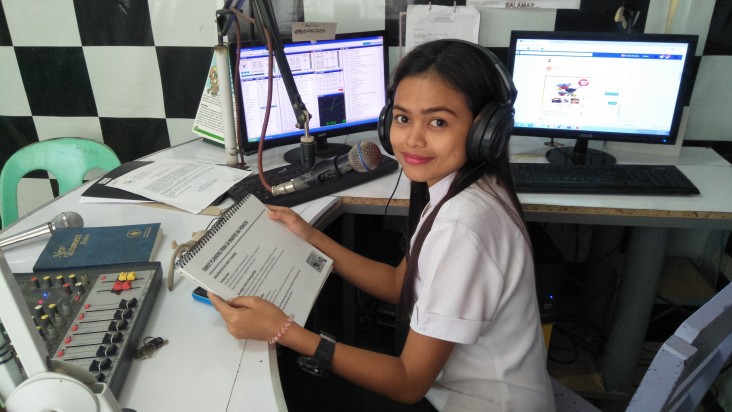Speeches Shim

June 2018 — When Ailleene Joy Verbo was a child, she loved listening to her grandfather’s solar-powered radio. “Our rural village did not have electricity,” she said. “The radio broke the quietness of the day.”
Verbo grew up in Siay, Zamboanga Sibugay — a province in the Philippines’ Mindanao region. She, along with her five siblings, lived with her grandparents because her parents moved away to find jobs.
“My mother had to work overseas to sustain our needs,” said Verbo.
Now a nurse and mother herself, Verbo knows how difficult it is to support a family, especially in rural areas where unpaved roads, marshlands, mountains and seas isolate people from opportunities available in towns and cities.
“Sometimes, if people get sick, they just endure pain and illness,” said Verbo, adding that people, in many instances, are unable to take charge of their own health.
A recent national health survey showed that more women in Mindanao desire to limit or space their pregnancies and use family planning methods, but lack information on where they can access the services. The areas where these women live are marked by high percentages of unintended or risky pregnancies that can result in serious consequences, including death.
In 2013, USAID launched its MindanaoHealth project, implemented by Jhpiego, to help the Philippine Department of Health strengthen health systems and services, especially for people living in hard-to-reach areas. The project, which works to improve access to maternal, neonatal and child health and nutrition, also trains health service providers to counsel parents looking to choose a method of family planning.
In 2017, Verbo became a family health associate in her hometown and undertook this training. Through this project, she learned to perform and administer basic procedures and services. She began visiting communities and homes to provide on-the-spot care.
Last February, a local radio station invited Verbo to appear as a guest on a show called Itanong mo Kay Doc! (Ask Doc!) to answer listeners’ questions about reproductive health. Since people in the region get their news from the radio, she saw this as an opportunity to make a big difference.
Verbo’s broadcast reached nearly 300,000 people across the province. When listeners flooded the station with questions, the station invited Verbo to host regularly. She also gave out her personal mobile number to answer listeners’ questions or refer them to their nearest health center when she is not on air.
“I just don’t want more children and families to suffer,” said Verbo, who now hosts the show about once per month.
USAID’s MindanaoHealth project, which runs from 2013 to 2018, has trained over 9,000 health service providers across Mindanao. Mostly, these service providers conduct group counseling and community outreach activities. They also visit hospital wards and outpatient departments.
“Doing a good job is not always about impressive innovations; sometimes it is only about doing something with plain dedication,” said Verbo.
LINKS
Follow @USAID_Manila, on Facebook, on Flickr, on YouTube

Comment
Make a general inquiry or suggest an improvement.